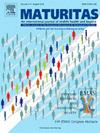Elevated neutrophil-percentage-to-albumin ratio predicts increased all-cause and cardiovascular mortality in hypertensive patients: Evidence from NHANES 1999–2018
IF 3.9
2区 医学
Q2 GERIATRICS & GERONTOLOGY
引用次数: 0
Abstract
Background
This study investigates the association between the neutrophil-percentage-to-albumin ratio (NPAR) and all-cause mortality in patients with hypertension, and its relationship with cardiovascular mortality.
Methods
This study examined data from 18,469 adults with hypertension in the National Health and Nutrition Examination Survey (1999–2018) and the mortality data from the National Death Index. The link between NPAR and mortality risk was visualized using restricted cubic splines. The optimal NPAR cut-off value for the prediction of survival outcomes was identified via maximally selected rank statistics. We employed weighted multivariate Cox regression and subgroup analyses to evaluate the relationship between NPAR and risk of all-cause and cardiovascular mortality. We assessed NPAR's predictive accuracy for survival outcomes using time-related receiver operating characteristic analysis.
Results
During a median follow-up of 105 months, 31.8 % of 18,469 participants died, with 8.9 % from cardiovascular causes. Restricted cubic splines analysis showed a positive link between NPAR and both all-cause and cardiovascular mortality. Cox models indicated that higher NPAR (>1602.08) significantly raised risks of all-cause (HR 1.80, 95 % CI 1.54–2.12, p < 0.0001) and cardiovascular mortality (HR 1.54, 95 % CI 1.24–1.91, p < 0.0001). The stability of results was confirmed through stratified and interaction analyses. The area under the curve for 3-, 5-, and 10-year survival were 0.67, 0.65, and 0.63 for all-cause mortality and 0.61, 0.62, and 0.63 for cardiovascular mortality.
Conclusions
Elevated NPAR independently raises the risk of all-cause and cardiovascular mortality in hypertensive patients, indicating its potential in the clinic as a practical tool for predicting long-term mortality risks and influencing treatment strategies.
中性粒细胞百分比与白蛋白比率升高预测高血压患者全因死亡率和心血管死亡率增加:来自NHANES 1999-2018的证据
背景:本研究探讨了高血压患者中性粒细胞百分比-白蛋白比(NPAR)与全因死亡率的关系及其与心血管疾病死亡率的关系。方法:本研究分析了1999-2018年美国国家健康与营养调查(National Health and Nutrition Examination Survey)中18469名高血压成年人的数据,以及美国国家死亡指数(National Death Index)中的死亡率数据。NPAR和死亡风险之间的联系使用受限三次样条可视化。预测生存结果的最佳NPAR临界值通过最大选择的秩统计确定。我们采用加权多变量Cox回归和亚组分析来评估NPAR与全因死亡率和心血管死亡率之间的关系。我们使用与时间相关的受者工作特征分析来评估NPAR对生存结果的预测准确性。结果:在105个月的中位随访期间,18,469名参与者中有31.8%死亡,其中8.9%死于心血管原因。限制性三次样条分析显示NPAR与全因死亡率和心血管死亡率呈正相关。Cox模型显示,较高的NPAR(>1602.08)显著提高了全因死亡风险(HR 1.80, 95% CI 1.54-2.12, p)。结论:NPAR升高独立提高了高血压患者全因死亡和心血管死亡风险,表明其在临床中有潜力作为预测长期死亡风险和影响治疗策略的实用工具。
本文章由计算机程序翻译,如有差异,请以英文原文为准。
求助全文
约1分钟内获得全文
求助全文
来源期刊

Maturitas
医学-妇产科学
CiteScore
9.10
自引率
2.00%
发文量
142
审稿时长
40 days
期刊介绍:
Maturitas is an international multidisciplinary peer reviewed scientific journal of midlife health and beyond publishing original research, reviews, consensus statements and guidelines, and mini-reviews. The journal provides a forum for all aspects of postreproductive health in both genders ranging from basic science to health and social care.
Topic areas include:• Aging• Alternative and Complementary medicines• Arthritis and Bone Health• Cancer• Cardiovascular Health• Cognitive and Physical Functioning• Epidemiology, health and social care• Gynecology/ Reproductive Endocrinology• Nutrition/ Obesity Diabetes/ Metabolic Syndrome• Menopause, Ovarian Aging• Mental Health• Pharmacology• Sexuality• Quality of Life
 求助内容:
求助内容: 应助结果提醒方式:
应助结果提醒方式:


